The humongous, cheery blooms of sunflowers, nodding head and shoulders over the garden gate, is a welcome addition to any food plot or house corner.
But these sun-following flowers aren’t just for show — they provide protein-rich, delicious seeds for both humans and animals. Here’s our guide for harvesting sunflower seeds as well as cooking and saving seeds for the table and next year’s planting.
How to Protect Your Harvest
One of the biggest challenges that you may face as a grower is the fact that you aren’t the only one looking forward to munching on your sunflower harvest. Your developing seeds are a high-lofted buffet for any goldfinch, titmouse, or other opportunistic bird that happens upon them.
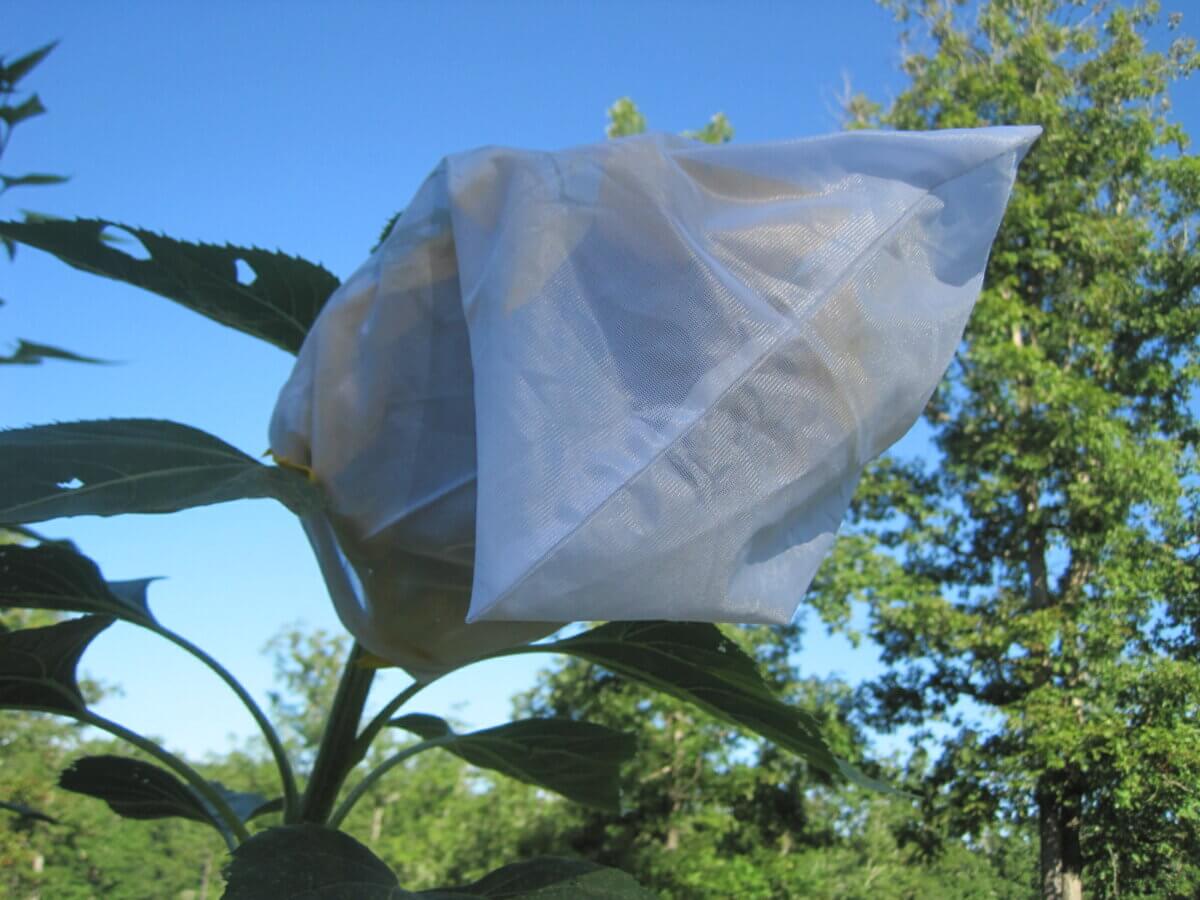
Birds can strip a sunflower of its seeds in record time, and they often do it even before the flowers have finished developing. The best way to avoid losses, then, is to prevent them. As soon as those short-lived, giant blooms have pollinated and the petals have begun to wilt, cover them with netting, a paper bag, or other lightweight material that will block birds from gorging themselves.
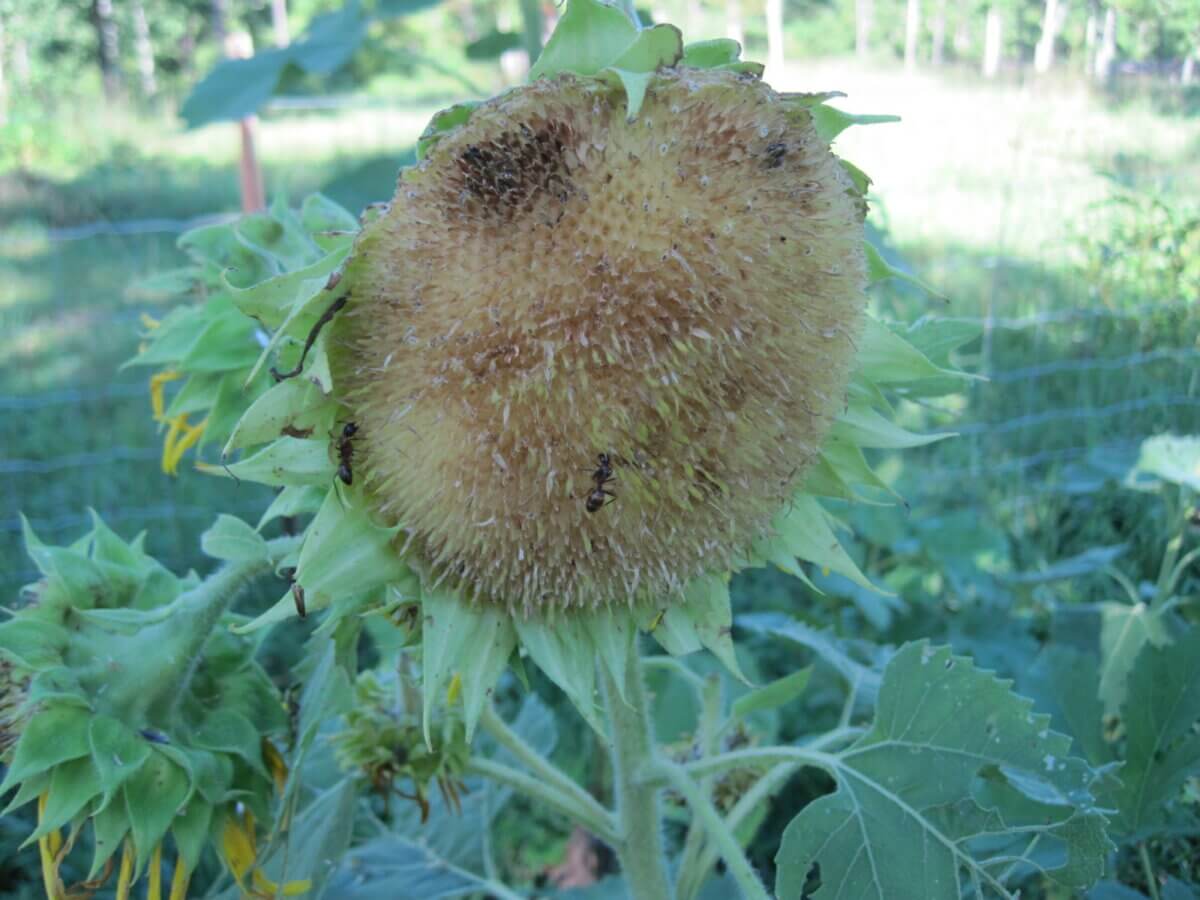
I like to use nylon mesh produce bags — many of them come with a handy drawstring, and they are airy enough that they dry out quickly after a rainstorm.
Granted, with all those bagged blooms, your formerly beautiful Van Gogh painting of a garden won’t be quite as attractive, but it’s worth it. As sad as those sunflowers look with their chastened heads drooping toward the ground, it’s a lot more depressing to find a prematurely stripped seed head before harvesting the seeds yourself!
How to Know It’s Time to Harvest
The other big challenge when it comes to harvesting sunflower seeds is the surprising amount of time it takes for them to actually be ready. The Russian Mammoth seeds you planted in May are often not ready to harvest until October. Even quick-maturing varieties will need upward of 90 days to be harvest-ready ripe.
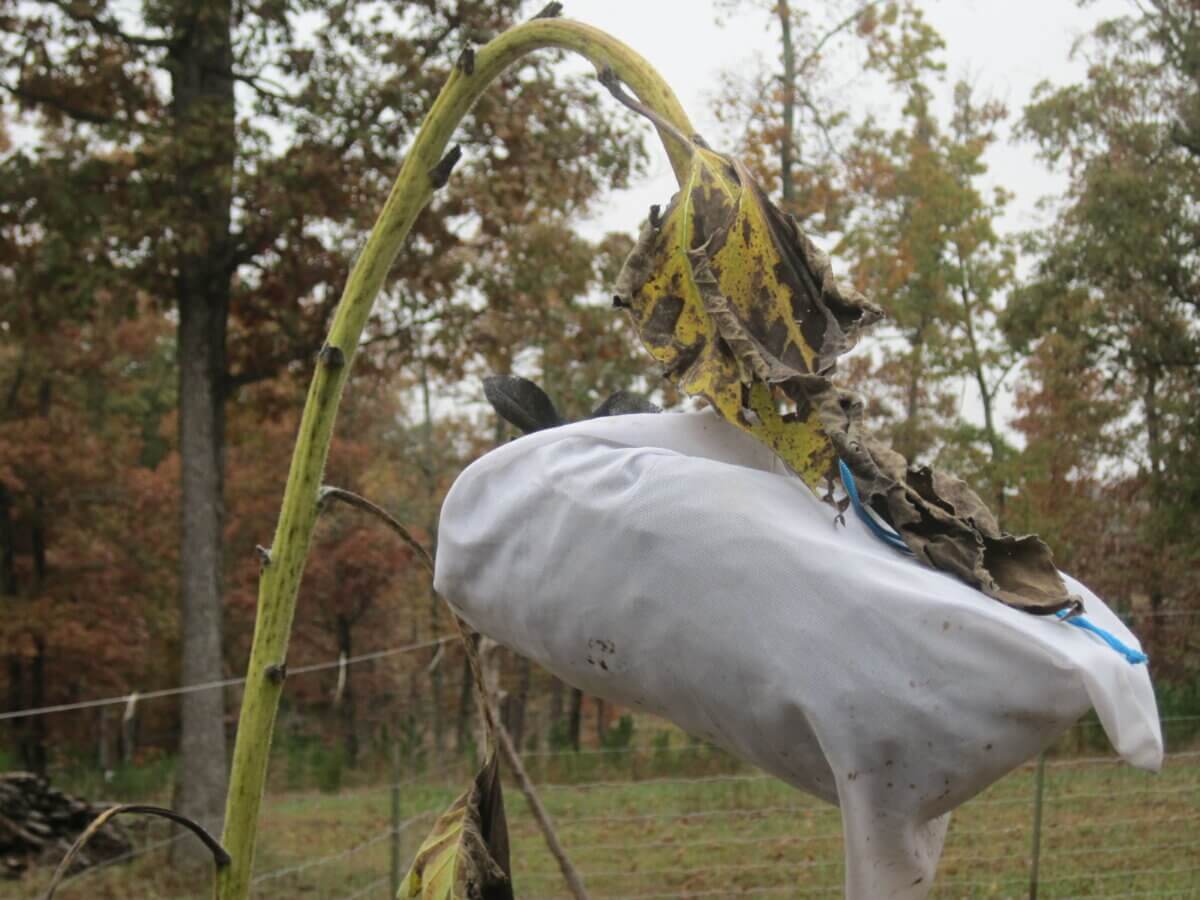
You need to be patient and watch for the backs of the flowerheads to lose their green luster and turn a waxy yellow before harvesting sunflower seeds is a possibility. The leaves will probably be pretty brown by this point, too.
Once you’re sure it’s time, cut the heavy flowerhead and leave at least a 2-foot handle of stem attached. Hang those harvested flowerheads in a dry, airy place (out of the way of birds) where they can completely dry.
Harvesting Sunflower Seeds
Now, at long last, it’s time for my favorite part — freeing those wonderful, useful seeds. Rubbing the dry sunflower seeds free from the flowerhead is a satisfying activity, and a nice way to spend an afternoon. It’s also a great task to give children (with their small fingers) and an easy way to get them involved in garden work.
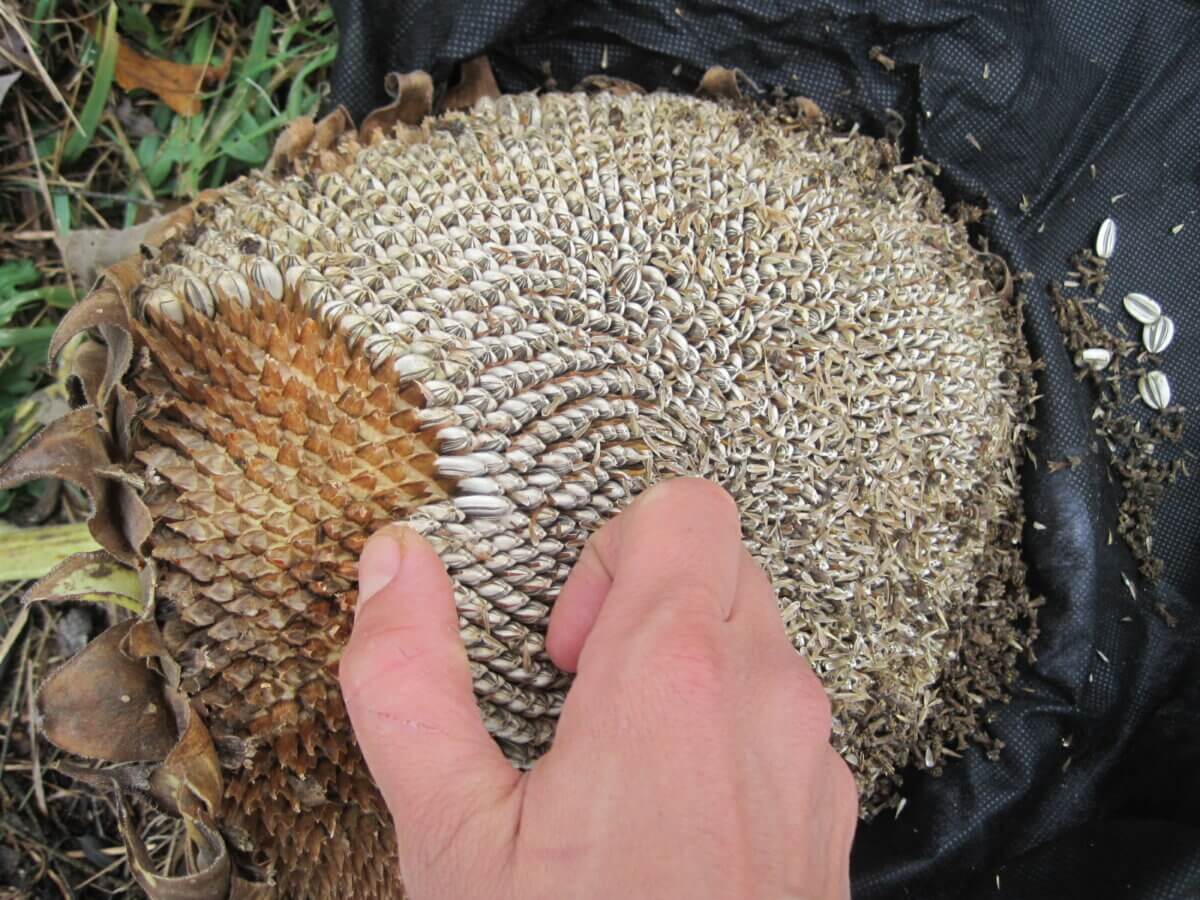
But before you set to work, take a moment to admire the mathematically precise pattern of the seed head. It was described by 16th century English herbalist John Gerard, saying that the seeds are arranged “as though a cunning workman had of purpose placed them in very good order, much like the honeycombs of bees.”
Ways to Use Sunflower Seeds
Once you separate all the seeds, it’s time to decide what to do with your delicious haul. You can, of course, eat them raw. You can also soak them in salted water, add spices if desired, and then roast them in the hull for an insanely addictive snack.
When you’ve perfected your technique for cracking the hulls between your teeth — they should fracture like the shells of a clam — you’ll be unstoppable.
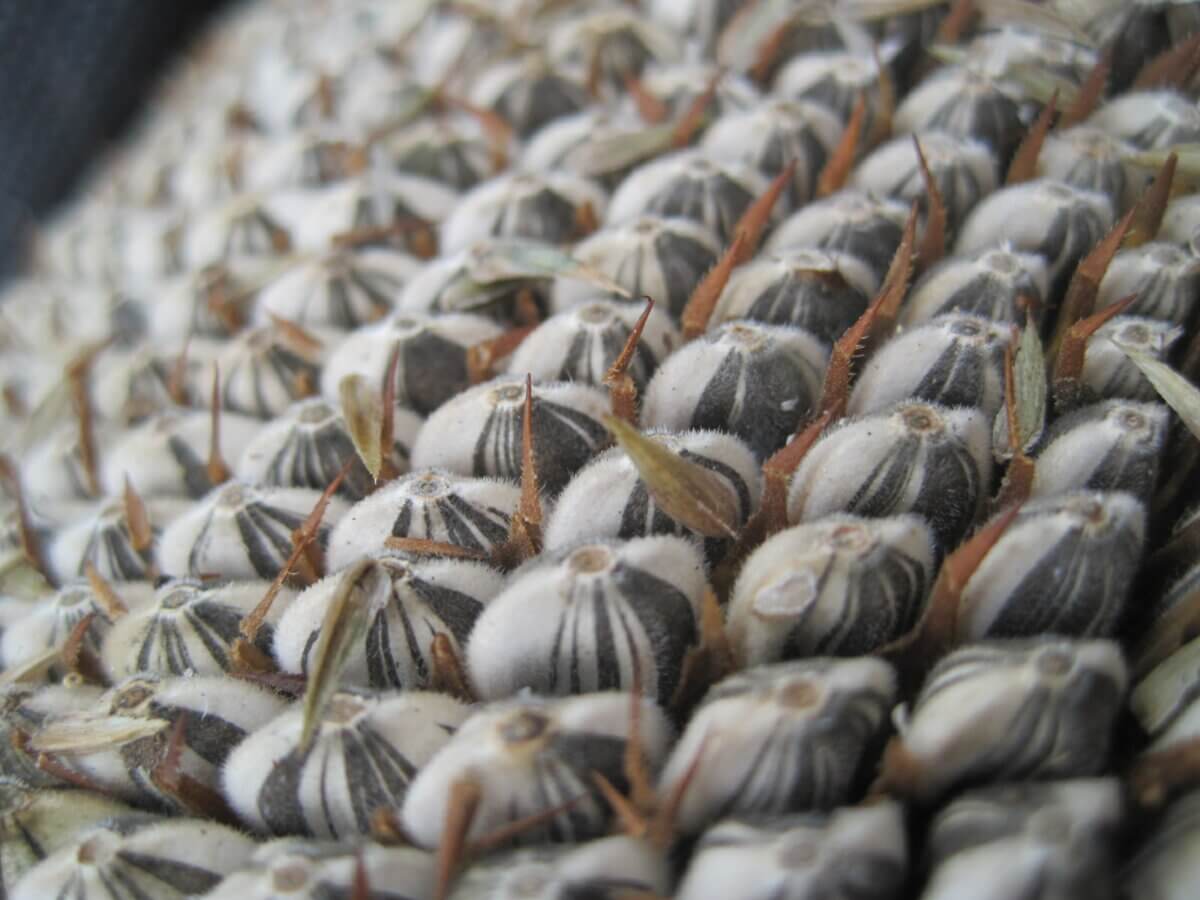
Of course, using sunflowers in a recipe requires them to be hulled. Hulling sunflowers in bulk is a bit tedious, but you can try a bunch of different methods and see which work for you. You want to crack the hulls without pulverizing the nut kernel inside, and you can use a rolling pin, nested baking sheets, or a manual grain mill (set to a wide setting) to get the job done. A quick winnowing with a fan or a breezy day on the porch will get you a heap of cleaned seeds in short order.
If you hull a number of sunflower seeds, bear in mind those whimsically-striped hulls are phytotoxic which inhibits the growth of other plants. This might seem like they’re bound for the garbage, then, rather than the compost, but wait! Use that quality to your advantage and spread sunflower hulls in pathways and other areas where you don’t want anything to grow.
The easiest way to enjoy the fruits of all your effort is to eat the hulled seeds whole. Sunflower seeds are a lovely addition to granola, a tasty sprinkle on a salad, and a nice snack in their own right when roasted and salted with a touch of cayenne.
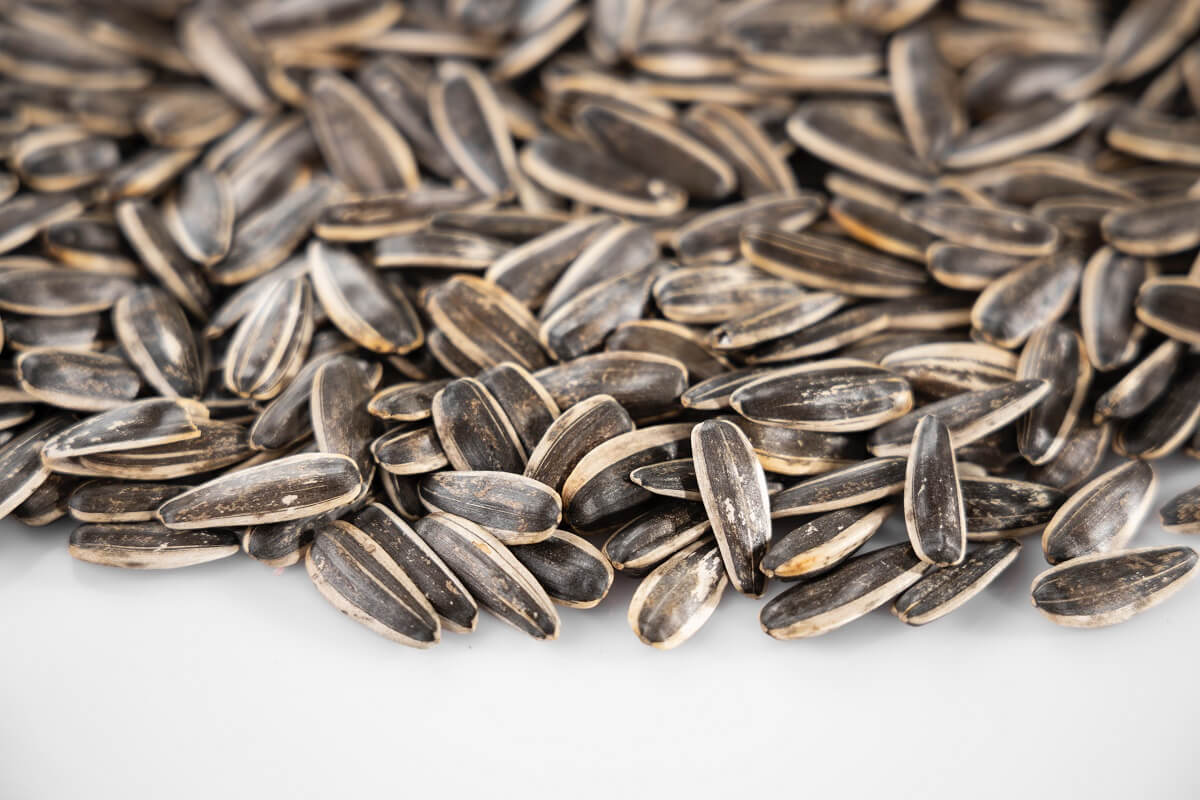
But if you’re going to go through the effort to grow and hull your own sunflower seeds, let’s have some fun. If you’re curious about more traditional and diverse ways to enjoy sunflower seeds, look to the recipes from people who originally domesticated these Native American plants. Spirit of the Harvest, a delightful cookbook of recipes from many of the different indigenous nations of North America, offers this idea for a savory sunflower seed soup, courtesy of the garden-savvy nations of the Northeast Woodlands.
The book recommends you take 2 cups of hulled sunflower seeds and sauté briefly with thinly sliced green onions. Add 6 cups of chicken broth, and simmer, uncovered, for about an hour. Season with 2 tablespoons of fresh chopped dill, and salt and pepper to taste.
The recipe introduction also includes a mention of how roasted seeds and hulls were brewed to make a coffee-like beverage. I’ve not tried it yet, but I’m always game for growing my own delicious drinks, rather than shelling out cash for them.
Sunflower Seed Taco “Meat”
One of our homestead’s favorite ways to use sunflower seeds is as “meat” in a taco or burrito.
Ingredients
- Sunflower seeds
- Diced onion
- Jalapeño
- Garlic Cloves
- Whole cumin seeds
- Oregano
- Cayenne Powder
- Salt/Pepper
- Your favorite taco fixings
Directions
- Using a food processor, pulse 2 cups of hulled sunflower seeds until they have become a very coarse flour. Remove and put in a large, oiled skillet.
- Process a diced onion, jalapeño, and 3 cloves of garlic until they are a similar size, and add to the heating skillet.
- Add 1 teaspoon of whole cumin seeds. Sauté until fragrant and lightly browned, then add salt, pepper, oregano, and as much cayenne as you want.
- If desired, pour a whisked egg over the mixture and stir it while it cooks.
- Spoon into a flour tortilla with fresh tomatoes, cheese, avocado, and a decent dollop of your favorite hot sauce. It can’t be beat.
Sunflower Seed Cooking Oil
Sunflower seeds can also be a source of your own cooking oil.
Armed with an oil press, it is possible to grind seeds — black oil sunflower seeds are recommended — into a mild-tasting oil that is excellent for both sweet and savory applications. The oil may come out looking black, but we found that if it is poured into mason jars, the dark color will settle to the bottom within a few days, and a clear, light oil will be easily poured off the top.
Finally, this article can’t conclude without planning for the future. Before you go crazy roasting and hulling every seed, be sure that you set some aside for next year.
Thankfully, sunflower seeds couldn’t be simpler. Set aside the harvested seeds in a cool, dry location, and they’ll be viable for years.
What are your favorite ways to use sunflowers? Give us your ideas in the comments below, and happy harvesting!





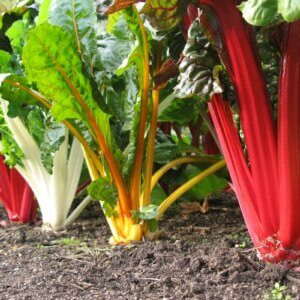

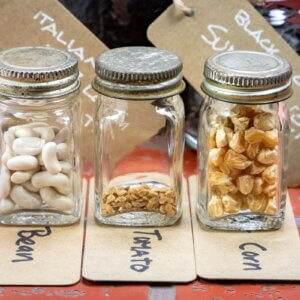































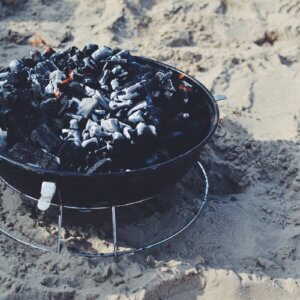


Leave a Reply